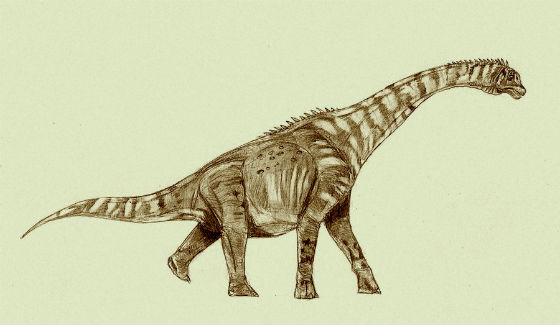
Venenosaurus belongs to the family of a sauropod dinosaur that had been found existed in the Aptian/Albian age of the Cretaceous period. The fossil remains of the species were first discovered in USA, Utah, Cedar Mountain Formation. Tony DiCroce, a notable Natural History volunteer was the first to discover the fossil in 1998. This herbivore species comes under the classification of Chordata, Reptilia, Dinosauria, Saurischia, Sauropodomorpha, Sauropoda, Titanosauriformes, Brachiosauridae.
The species was first named and described by Virginia Tidwell, Kenneth Carpenter, and Suzanne Meyer in 2001. The preserved holotype, DMNH 40932 is the known part of collection of this species that consists of tail vertebrae, the left scapula, right radius, left ulna, metacarpals, forefoot phalanges, right pubis, left and right ischia, metatarsals, chevrons, and ribs.
The incomplete post cranial skeletons of an adult and juvenile are the found fossil representation. From the identified fossil specimen it has been observed that the dinosaur was about 10 m (33 ft) long. Its unique distinguishing characteristics include robustness and slender arm bones which was surprisingly distinct of its type Sauropod family.
| Name: | Venenosaurus(Poison lizard). |
| Size: | 10 meters long. |
| Fossil representation: | Incomplete post cranial skeletons of an adult and juvenile. |